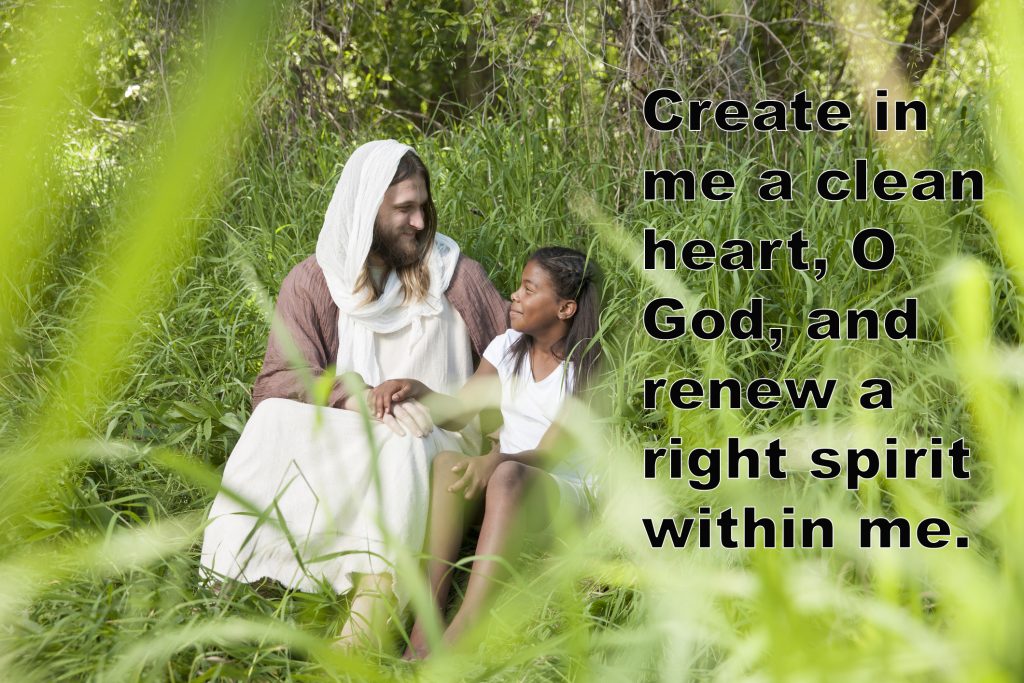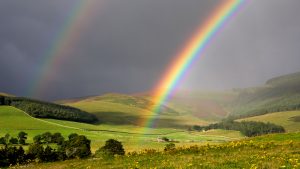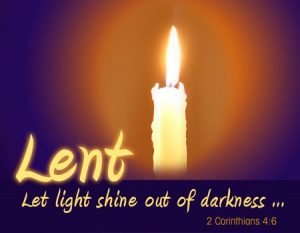Prayer:

Our Father in heaven,
You have called us to be hearers
and bearers of your Word;
To embody your love, your passion,
and your dream for the world.
Recreate in us
the Word made flesh
and dwelling among us.
Fill us with the Spirit of Jesus
So that his saving work
may be manifest in us today.
Through your word
Open our eyes, our ears, our hearts and minds,
To see and to be
your living and life-giving presence
for those most in need.
May we proclaim your word
Not only with our lips
But by the beauty of our lives
Fashioned in your image.
An introduction to the Spirituality of Lent.

The origin and of the word “lent” is interesting: it comes from an old English word “lencten” meaning “Spring, Springtime.” For those of us living in the western world we are entering into the season of spring at this time of year: new life stirring in the trees and shrubs; plants sprouting new shoots; seeds beginning to germinate beneath the earth; daylight lengthening. We are witnessing a regeneration in the world of nature around us.
It is as if the rebirth in nature stirs up a longing in us for growth and regeneration in our own spiritual lives: a longing for a new springtime in our own lives, in our relationship with God, with our neighbour and with our own selves. Lent is a season of working for growth in our own lives, of “tilling the earth” for a new blossoming of all that is best and beautiful within us, of engaging in activities that we hope will facilitate the full flowering of our humanity as followers of Jesus.
The season of Lent begins with an expression of our need of repentance – the wearing of the ash on Ash Wednesday. A recognition that we are not all that we could be or all that we are called to be; that there is something missing in our lives; that we are capable of more. Our starting point is a place of openness, honesty and humility and a desire for something more, something better.
“Jesus” is the desired goal – to grow in the mind and heart of Jesus Christ. To experience his spirit driving us. To embody today his trust in the Father; his compassion for the sick and suffering; his welcome for the stranger; his mercy for the fallen, his courage in standing up for the poor; his generosity of heart; his hope in the face of all that life can throw at us.
In one of the prefaces of lent we pray “As we recall the great events that gave us new life in Christ the image of your son comes to perfection within us.” That is where we hope to go and how we hope to grow. And humbly we look forward to rising with Jesus at Easter to new life: new courage, new trust, new strength, new love so that his love might shine in us in new and even more creative ways.
But it is not a journey that we make on our own. No, we take the hand of Jesus, and if we are already holding his hand we take an even tighter hold, opening up to an even deeper relationship with him; to an even deeper friendship, drawing close to him so as to draw life from him – to be fed, to be nourished, to be empowered, to be transformed. Just as the world of nature around us opens up to the increased light and heat of the sun, in the same way we too open up to the light and the love Son of God. Our growth in love will be the fruit of our turning towards the Son and bathing ourselves in his light.
Whatever practises we engage in during this season of Lent
they are but a means to this end: that we might turn our lives towards Jesus – his person and his project.
And this is why Lectio Divina offers us the prospect of a meaningful and fruitful season of Lent – as together we read, recognize, respond, rest-in and reflect on his living and life-giving presence and work not only in the past, but even more importantly, today.
At the same time we accept that the growth we long for will not be achieved in the twinkling of an eye or by the wave of a magic wand but rather it is a long, lifelong journey of growing more and more in his image and likeness.
In one of the Hymns for midday prayer we pray:
The day is come the accepted day
When grace like nature flowers anew
Trained by thy hand the surer way
Rejoice we in our springtime too.
Simple summary of Lectio steps with Gospel Passage.
It might be helpful to summarize the Lectio journey with the Gospel in the following steps:
We read the gospel passage several times to become familiar with the past event described therein. Where it took place? When did it happen? Who was involved? What happened?
Having listened deeply to the passage and its context, we now move to meditation where we allow the passage to remind us of similar events, happenings or encounters from our own life-experience, in which we have come to see the same movement of grace or sin contained in the passage reproduced or living again today. In that recognition we meet God alive and at work today as in the past – this “good news” has the power to strengthen, inspire, motivate, and give life!
Having recognized the passage in life today, spontaneously we are moved to a prayer of thanksgiving, repentance or petition or all three, expressed in our own words, and interlaced with words of the passage where possible – in this way our recognition of passage in life experience is elevated, ennobled and celebrated as “a word of God today” which it truly is.
As the prayer deepens and the presence of God takes over, we journey to the Contemplative moment – a deep moment of resting in God’s presence and work which we have first encountered in the passage and in life experience. God becomes the dominant reality and we sit trustingly in his presence as we would before an open fire…letting his light and warmth penetrate our hearts.
In the wisdom moment of the Lectio we ask ourselves what have we learned from our journey with the passage? What new insights and understanding have been given to us – into life, love, God, humanity, beauty, truth, freedom etc.? We seek to give expression to these in our own words, in short and succinct non-moralizing statements, gems of truth, universally true, and sparkling with light and beauty. We hold them gratefully and joyfully in prayer, savouring and delighting in them and trusting that in God’s own time and own way they will lead to action.
Prepared by Lectio Centre Newry.
lectio.newrydominican.com
1st Sunday of Lent, year C.
Gospel reading: Luke 4:1-13.
 Vs.1 Filled with the Holy Spirit, Jesus left the Jordan and was led by the Spirit through the wilderness,
Vs.1 Filled with the Holy Spirit, Jesus left the Jordan and was led by the Spirit through the wilderness,
Vs.2 being tempted there by the devil for forty days. During that time he ate nothing and at the end he was hungry.
Vs.3 Then the devil said to him, “If you are the Son of God, tell this stone to turn into a loaf.”
Vs.4 But Jesus replied, “Scripture says, ‘Man does not live on bread alone.”’
Vs.5 Then leading him to a height, the devil showed him in a moment of time all the kingdoms of the world and said to him,
Vs.6 “I will give you all this power and the glory of these kingdoms, for it has been committed to me and I give it to anyone I choose.
Vs.7 Worship me then and it will be yours.”
Vs.8 But Jesus answered him, “Scripture says, ‘You must worship the Lord your God and serve him alone.”’
Vs.9 Then he led him to Jerusalem and made him stand on the parapet of the Temple. “If you are the Son of God,” he said to him, throw yourself down from here,
Vs.10 for scripture says, ‘He will put his angels to guard you,’ and again,
Vs.11 ‘they will hold you up on their hands in case you hurt your foot against a stone.’”
Vs.12 But Jesus answered him, “It has been said, ‘you must not put the Lord your God to the test.’”
Vs.13 Having exhausted all the ways of tempting him, the devil left him, to return at the appointed time.
Deeper Listening.
 Traditionally on the first Sunday in Lent the Church offers us a story of Jesus in the wilderness. This year, Year C, we have Luke’s account. Unlike Mark, both Luke and Matthew give us details of the temptations, with small significant differences in each. Lectio Divina invites us to enter into the story of Jesus in the wilderness and to discover that it is a story that is lived again today in our personal lives and in the life of our community, church and world. It challenges us to grow in the spirit of Jesus whose faithfulness and trust in his Heavenly Father remained firm despite the temptations. The wilderness experience – frightening and dreadful as it is – can be a time of growth in our relationship with God and with one another.
Traditionally on the first Sunday in Lent the Church offers us a story of Jesus in the wilderness. This year, Year C, we have Luke’s account. Unlike Mark, both Luke and Matthew give us details of the temptations, with small significant differences in each. Lectio Divina invites us to enter into the story of Jesus in the wilderness and to discover that it is a story that is lived again today in our personal lives and in the life of our community, church and world. It challenges us to grow in the spirit of Jesus whose faithfulness and trust in his Heavenly Father remained firm despite the temptations. The wilderness experience – frightening and dreadful as it is – can be a time of growth in our relationship with God and with one another.
Where did this take place?
Jesus had left the Jordan where he had been confirmed in his identity and mission at his baptism and now entered “the wilderness” – calling to mind the scene of temptations of the people of Israel as they crossed the Sinai desert on the way from slavery to the freedom of the Promised land. ( The first reading, Dt 26:4-10, celebrates with gratitude the saving event of the exodus from Egypt and God’s fulfillment of his promise. In other words God can be trusted!) It was a wild, hostile place with little food or water. The environment was intimidating: scorching sun, the threat of wild animals, and no shelter. There were no roads which meant at times the people felt utterly lost and hopeless. Once settled in the promised land, the Jewish people looked back on it, and understood “that Yahweh your God was training you as a man trains his child..” (Dt 8:6.) They came to appreciate that even in the desert, contrary to appearances at times, God was looking after them.
When did this happen?
This incident is placed at the beginning of Jesus’s public ministry, just after his baptism in the Jordan and before his return to Galilee. The evidence of the passage, “The Devil left him to return at the appointed time..” (vs 13) would suggest that these were not once off temptations and that he had to wrestle with them from time to time – the garden of Gethsemane being a case in point. After his overwhelming experience of the Father’s love at the Jordan, when
Remember how in the wilderness you were tempted “to turn the stones into bread,” to numb the pain or escape the pain by taking refuge in alcohol, drugs, overeating or sexual gratification. Remember the struggle to stay in the place of pain and remain trusting in God’s presence and love.
Can you remember a wilderness experience that so shattered your faith in God, that there-after you were tempted to immerse yourself and lose yourself in the pursuit of material possessions, status, distinction or influence in the hope that you would find your security there, even if it meant compromising with evil to achieve these goals – abandoning values of honesty and integrity?
Can you remember the experience of trying to manipulate God in prayer, “ Do this for me and I’ll trust in you. Or show me a sign and then I’ll follow your way.” And then we journeyed to a much deeper kind of prayer of just leaving ourselves in God’s hands and not even bothering to ask for anything anymore.
Can you identify with that experience of “the devil leaving you, only to return at the appointed time,” and you had to resume the struggle again and again?
Continuing with the Lectio Journey
Let the prayers of thanksgiving, repentance and petition flow from your meditation – ideally these are expressed in our own words interlaced with words from the passage. (See introduction to Lectio stages.)
Let the rich silence of God’s presence grow and deepen as we journey to a prayer of no words and no images – simple presence to the presence of God. (Contemplative moment – see introduction).
We reflect on our experience of the work of God in the passage and in life until a truth or some truths emerge – new insights into life and love – which can be savoured and celebrated in prayer as they release their life-giving power in us, moulding and shaping our minds and hearts and bearing fruit in our lives. (Wisdom Moment – see introduction).